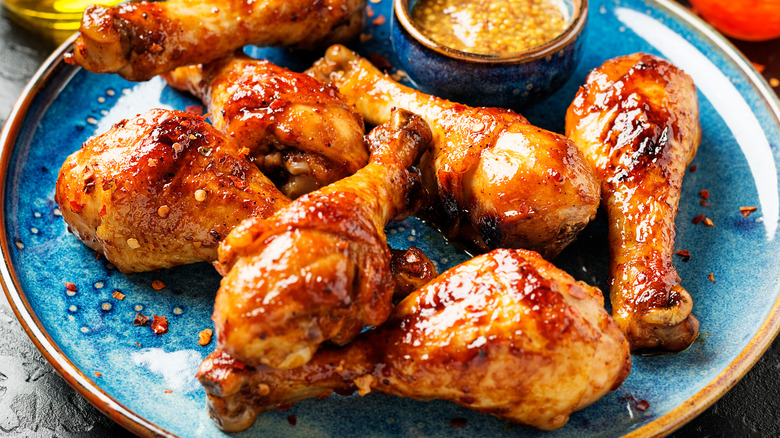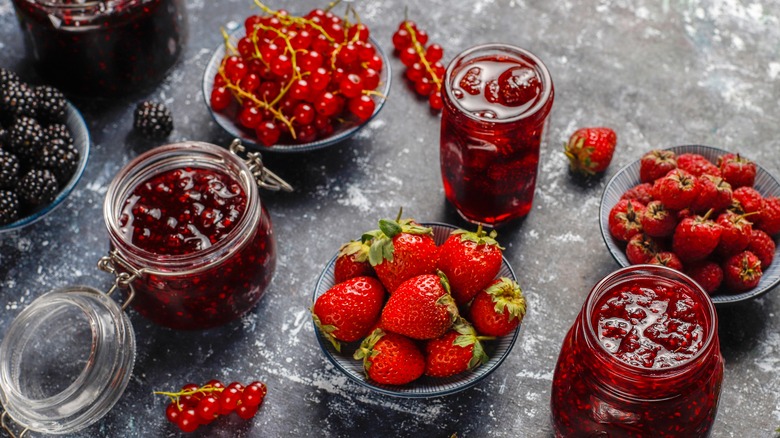The Breakfast Staple That Makes A No-Frills Glaze For Grilled Meats
We'll just say it — grilled meats were meant to be glazed. Gorgeously glossy and caramelized, glazing adds a final burst of flavor to chicken thighs, lamb chops, and everything in between. And despite the complex flavor glazes impart, they're actually quite easy to make. For a totally fuss-free recipe, look no further than the condiments on your breakfast table.
While the ketchup or barbecue sauce you might drizzle over hash browns or a breakfast bagel can be great bases for savory marinades, that's not what we're referring to here. It's the morning's sweet and syrupy spreads that are best saved for glazing — after all, glazes are essentially sugar-laced sauces. And while a jug of maple syrup or a jar of honey can certainly make an intriguing glaze, we're partial to jam.
Imparting significant flavor in next to no time at all, jam (but also jelly, marmalade, compote, and preserves) are teeming with complex flavors that border between pleasantly sweet and vibrantly tart, and this makes for a great pairing with rich and savory meats. However, what's especially unique about jams is that they also bring a unique texture to meats on the grill that are downright drool-worthy!
How to use jam as a glaze
Any flavor of jam, from Concord grape to rhubarb and beer, can be a fantastic glaze for grilled meat. Just keep in mind that some flavors may pair better with certain proteins than others. For example, zippy lemon marmalade can pair stunningly with lackluster chicken breast, whereas a fresh tropical jelly meets its match with fatty pork. Sweet stone fruit jams are instead ideal for savory cuts of beef, whereas a tart cranberry compote or mint jelly fares best with earthy lamb.
As for how to transform these fruity spreads into proper glazes, the process is simple. Since jams, jellies, and the like are already quite thick, they must be melted slowly over low heat so as to avoid boiling and increased viscosity. A touch of water is commonly added to keep the mixture thin for easy brushing on top of steaks and filets. And don't attempt to apply the jam until the final stages of cooking so you don't risk wasting or burning the glaze. When the skin and/or flesh has firmed up and is no longer weeping, repeatedly apply coats of jam, until a glossy sheen forms. Once off the grill, you can even amp up the flavors with a final coat as the meat rests. And just like that, jam will take grilled meats to another level — it doesn't get much easier!

